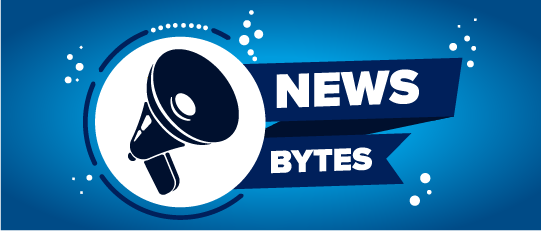For WorldatWork Members
- Getting Benefits Enrollment Right: Big Trends Spark Fresh Strategies, Workspan Magazine article
- Total Rewards Inventory of Programs & Practices, research
- Total Rewards Inventory Checklist, tool
For Everyone
- Most of Your Workers Will Likely Regret Their Open Enrollment Choices, Workspan Daily article
- Open Enrollment Is an Opportunity for Education and Engagement, Workspan Daily article
- Employers Say They Offer ‘Modern’ Benefits; Workers See It Differently, Workspan Daily article
- Is Your Organization Living Up to Its Employee Value Proposition? Workspan Daily article
As open enrollment season for employer-paid healthcare approaches, many total rewards (TR) leaders are challenged with delivering tough news — including rising premiums and reduced coverage — while encouraging employees to engage with their benefits.
In fact, WTW’s 2025 Employee Benefits Trends survey found that 87% of responding employers aim to boost the employee experience by focusing on personalization, better navigation and decision support. Additionally, 66% plan to address employees’ concerns on mental health and financial well-being.
Julie Noblick, a director of employee experience at WTW, explained that the consulting firm’s new survey found five key themes are expected to drive a shift in how employers approach their open enrollment strategy.
Access a bonus Workspan Daily Plus+ article on this subject:
Theme 1: Transparency About Cost Increases
According to Noblick, many organizations are anticipating premium hikes, so framing these changes within the broader value proposition of the benefits packages emphasizes support and maintains trust.
“We’re seeing more organizations choosing to be transparent about premium increases in their annual enrollment materials this year,” she said, adding that by explaining the factors driving these changes — such as inflation and the cost of new medications like glucagon-like peptide-1 (GLP-1s) — they can help employees understand the broader context behind why benefit recipients may pay more for healthcare coverage in 2026.
Organizations also have sought to frame these adjustments within the broader value proposition of their benefits package, sometimes even including a reminder that they currently and will continue to cover most of the cost of coverage.
Theme 2: Changes to GLP-1 Coverage
Mark Cunningham-Hill, the medical director at the Northeast Business Group on Health, said employers within the coalition of benefits leaders and healthcare stakeholders are generally including GLP-1s for weight loss in their formularies, while also offering “wrap-around” support services to address behavioral change, manage side effects and improve patient outcomes.
“Employers are also monitoring potential expanded indications for GLP-1s in areas such as liver, kidney and cardiovascular disease,” he said.
Noblick noted that as demand for weight management drugs skyrockets, some employers are scaling back coverage. She added how employers communicate these changes can make or break employee perception of wellness support.
“Communicating anything that employees perceive as a takeaway or that impacts coverage of an existing course of treatment should always be approached with care,” she said.
Noblick explained that messaging around the change should be clear, empathetic and delivered in advance of the change, along with resources for questions and information about any covered alternatives.
Theme 3: Personalized Messaging
According to Noblick, tailoring content for specific groups such as parents, recent graduates and part-time workers can allow employees to make choices that fit their life stage, healthcare needs and financial goals.
“By addressing the unique concerns and priorities of each group, organizations can provide more relevant and meaningful information, which in turn helps employees feel more engaged and supported,” she said.
Noblick cited the idea that parents might benefit from information on family health plans and pediatric care, while recent graduates may need guidance on understanding their first comprehensive health insurance options.
“Part-time workers, on the other hand, could appreciate details on flexible coverage and wellness programs that align with their schedules and budgets,” she said.
Theme 4: Life Event-Centered Messaging
The approaches to communicating benefits, Noblick said, will require more than “blanket” benefit overviews and should be more about crafting messaging to life events, such as a new diagnosis or starting a family.
“It makes benefits more relevant and personal,” she said.
Also, Noblick added, timely and targeted information can help employees navigate the specific challenges and opportunities that come with significant moments. For instance, when an employee receives a new medical diagnosis, organizations can provide detailed guidance on available health plans, specialist referrals and support services.
Similarly, when an employee is starting a family, they may be offered information on maternity and paternity leave, family health coverage, resources for new parents, and step-by-step instructions for adding a new dependent to their healthcare coverage.
“This approach not only enhances employees’ understanding of their benefits but demonstrates the employer’s commitment to their well-being and support in moments that matter,” Noblick said.
Theme 5: AI-Powered Communication
Finally, as artificial intelligence (AI) tools play a larger role, from interpreting utilization data to providing instantaneous answers to employee questions, Noblick said they are helping HR/TR teams do more with less, especially in lean environments.
She explained that these technologies can analyze vast amounts of data to identify trends and gaps in benefit usage, allowing leaders and practitioners to tailor their communications and interventions more effectively. For example, AI can:
- Detect if a particular group of employees is underutilizing mental health resources; and,
- Automatically send targeted messages with information and support options.
Additionally, Noblick noted that AI chatbots and virtual assistants can offer 24/7 support, answer common questions and provide immediate assistance, which can not only improve employee satisfaction but free up HR/TR staff to focus on more complex and strategic tasks.
“This integration of AI enhances the efficiency and responsiveness of HR, ensuring that employees receive the right information at the right time, even when resources are scarce,” she said.
Making a Difference
Overseeing open enrollment is a tough job, but it delivers great value to the organization and the workforce.
“As healthcare costs are the greatest expense for employers outside of payroll, the job of HR and benefit executives has become exponentially more difficult over the years, as they must now be experts in multiple areas that impact this rising cost center — from contracting for health and pharmacy benefits to developing programs that focus on total person health, including wellness and financial programs,” said Shawn Gremminger, the president and CEO of the nonprofit National Alliance of Healthcare Purchaser Coalitions.
Added Noblick: “Benefits enrollment is a chance for employers to reinforce their commitment to employee well-being and build stronger engagement, trust and retention in the year ahead.”
Editor’s Note: Additional Content
For more information and resources related to this article, see the pages below, which offer quick access to all WorldatWork content on these topics:
#1 Total Rewards & Comp Newsletter
Subscribe to Workspan Weekly and always get the latest news on compensation and Total Rewards delivered directly to you. Never miss another update on the newest regulations, court decisions, state laws and trends in the field.








